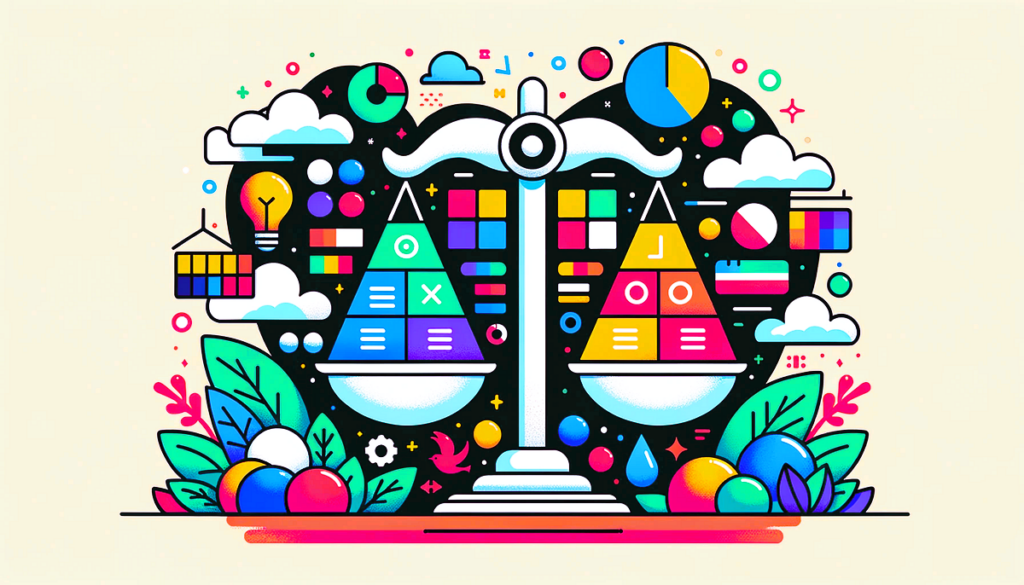In the ever-evolving landscape of the internet, web design plays a crucial role in creating a lasting impression on users. It’s not just about making a website visually appealing; it’s about finding the delicate equilibrium between aesthetics and functionality. A well-designed website not only captivates visitors with its visual appeal but also provides a seamless and efficient user experience. This article explores the art of balancing aesthetics and functionality in web design and its significance in the digital realm.
The Visual Symphony: Aesthetics in Web Design
Aesthetic considerations in web design encompass a wide range of elements, from color schemes and typography to imagery and overall layout. The visual appeal of a website can significantly impact the first impression users form. Consistent branding, intuitive navigation, and visually pleasing graphics contribute to a positive user experience.
Color psychology is a fundamental aspect of web design aesthetics. Different colors evoke various emotions and reactions. For example, warm tones like red and orange may convey energy and excitement, while cooler tones like blue and green may create a sense of calm and trust. Understanding the psychological impact of colors allows designers to choose a palette that aligns with the website’s purpose and target audience.

Typography is another vital component of aesthetics. Font styles and sizes influence readability and convey the brand’s personality. Striking a balance between creative and readable typography ensures that users can easily consume the content without sacrificing visual appeal.
Incorporating high-quality imagery and multimedia elements enhances the overall aesthetic quality of a website. Compelling visuals not only grab attention but also communicate the brand’s message effectively. However, it’s crucial to strike a balance and avoid overwhelming the user with too many graphics, which may result in slower loading times.
The Backbone of User Experience: Functionality in Web Design
While aesthetics create the initial attraction, functionality is the backbone that sustains user engagement. A visually stunning website can lose its appeal if users struggle to navigate or find the information they need. Functionality encompasses elements such as responsive design, intuitive navigation, and efficient performance.
Responsive design is essential in the era of diverse devices and screen sizes. A website should seamlessly adapt to various platforms, including desktops, laptops, tablets, and smartphones. Responsive design ensures that users have a consistent and enjoyable experience, regardless of the device they use.
Intuitive navigation is crucial for keeping users engaged. A well-organized menu structure, clear call-to-action buttons, and a logical flow of information guide users through the website effortlessly. Implementing user-friendly navigation contributes to a positive user experience and encourages visitors to explore more pages.
Website performance directly impacts user satisfaction. Slow-loading pages can lead to high bounce rates, negatively affecting search engine rankings and user experience. Optimization techniques, such as image compression and efficient coding practices, contribute to faster loading times. Read about the rise of minimalism in modern web design in our article.
The Harmonious Intersection: Balancing Aesthetics and Functionality
The most successful websites achieve a harmonious intersection between aesthetics and functionality. A visually appealing design should enhance, not hinder, the user experience. Design choices, such as the placement of visual elements and the use of white space, should complement the overall functionality of the website.

One approach to achieving this balance is through user-centric design principles. Understanding the target audience’s preferences, behaviors, and needs allows designers to tailor the aesthetics and functionality to meet user expectations. Regular usability testing provides valuable insights into how users interact with the website, guiding refinements that enhance both aesthetics and functionality.
Strategic placement of calls to action (CTAs) is another critical element in the balance between aesthetics and functionality. CTAs should stand out visually while seamlessly integrating into the overall design. A well-designed CTA encourages user engagement without compromising the website’s visual appeal.
Conclusion
In the realm of web design, the delicate dance between aesthetics and functionality is an ongoing challenge. A visually stunning website with poor functionality is likely to lose visitors, just as a highly functional but visually unappealing site may struggle to attract attention. Successful web design requires a thoughtful integration of aesthetics and functionality, creating an immersive user experience that leaves a lasting impression.
As the digital landscape continues to evolve, web designers must stay attuned to emerging trends and technologies to adapt their approaches. Balancing aesthetics and functionality is not a static goal but a dynamic process that requires continuous refinement to meet the ever-changing expectations of online audiences.
For further insights into web design standards and principles, refer to the Wikipedia page on Web Design.


